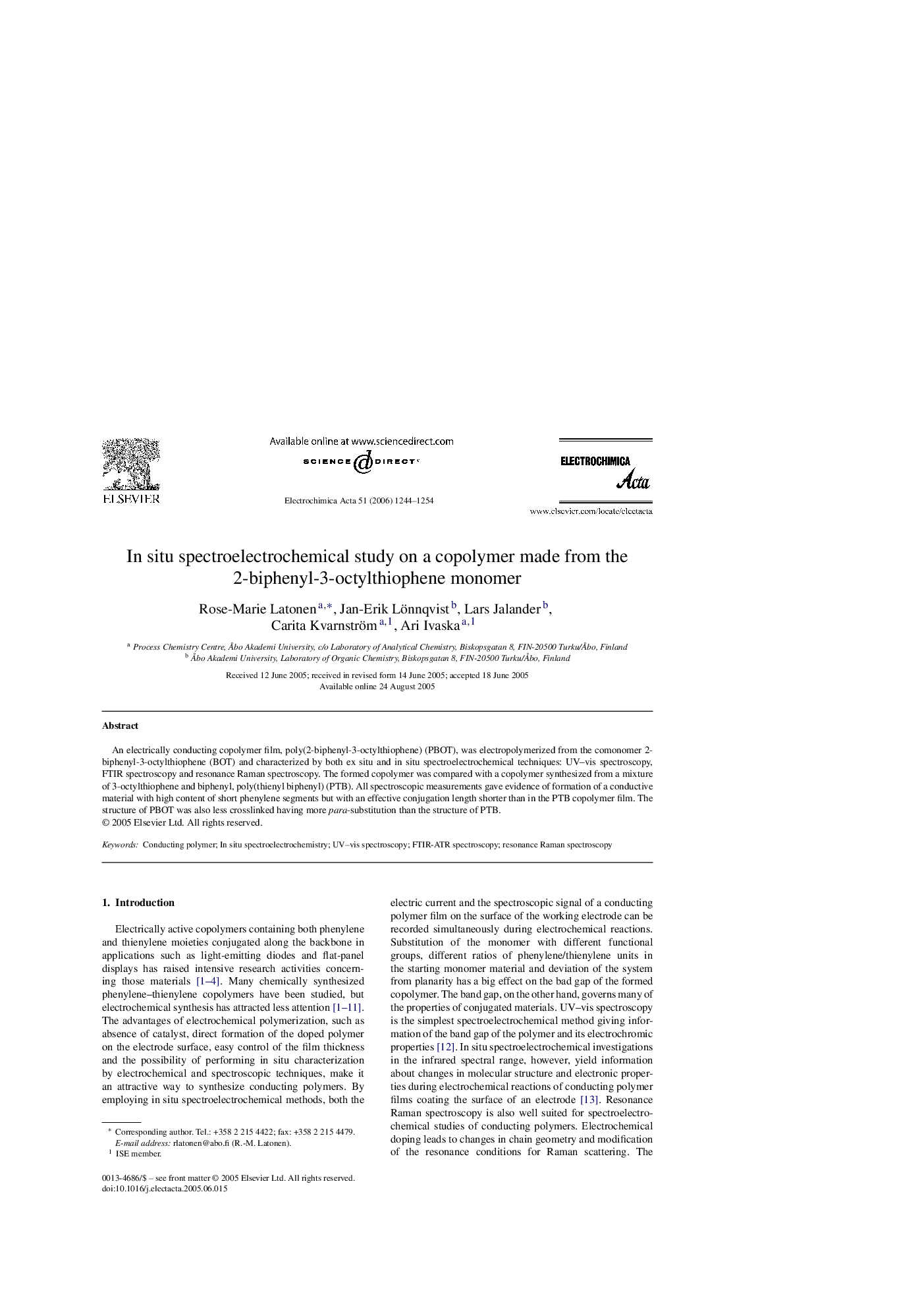| Article ID | Journal | Published Year | Pages | File Type |
|---|---|---|---|---|
| 196908 | Electrochimica Acta | 2006 | 11 Pages |
An electrically conducting copolymer film, poly(2-biphenyl-3-octylthiophene) (PBOT), was electropolymerized from the comonomer 2-biphenyl-3-octylthiophene (BOT) and characterized by both ex situ and in situ spectroelectrochemical techniques: UV–vis spectroscopy, FTIR spectroscopy and resonance Raman spectroscopy. The formed copolymer was compared with a copolymer synthesized from a mixture of 3-octylthiophene and biphenyl, poly(thienyl biphenyl) (PTB). All spectroscopic measurements gave evidence of formation of a conductive material with high content of short phenylene segments but with an effective conjugation length shorter than in the PTB copolymer film. The structure of PBOT was also less crosslinked having more para-substitution than the structure of PTB.
